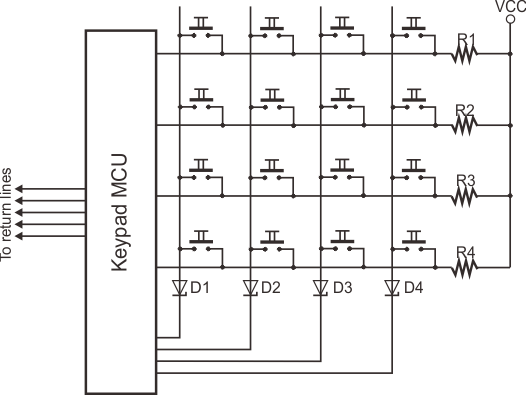Connecting Binary Keypads
Binary keypads (we will use this short name to describe "keypads that output binary key codes") do not require scanning — they contain a (typically microcontroller-based) circuit that performs the scanning and outputs encoded binary codes of pressed keys. Such keypads are sometimes called "encoded keypads."
Shown in the diagram below is a 4x4 binary keypad. If this was a matrix keypad, connecting it to your TiOS system would require eight I/O lines: four scan lines and four return lines. Being of the binary type, this keypad only needs five return lines to interface to your TiOS system.

You will, of course, immediately ask: why is it necessary to have five return lines when four would appear to be enough? Indeed, there are 16 keys, so you will need key codes &h0~&hF and these fit in 4 bits of data, right? Wrong! You need one extra code to indicate that no key is pressed, so for a keypad of 16 keys you will need 17 codes. A binary keypad always outputs some code, even if all its keys are released.
A dedicated setting — kp.idlecode — defines the code that your TiOS system should expect for the no-key-pressed situation. For example, you can set kp.idlecode = &h1F, which means that when all keys are released, your binary keypad is supposed to output "all 1s."
